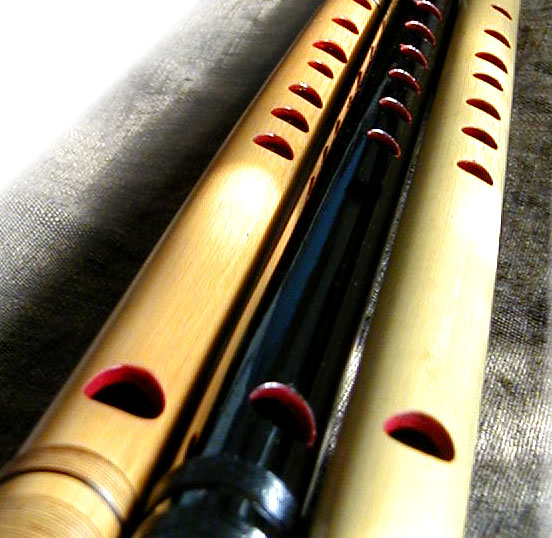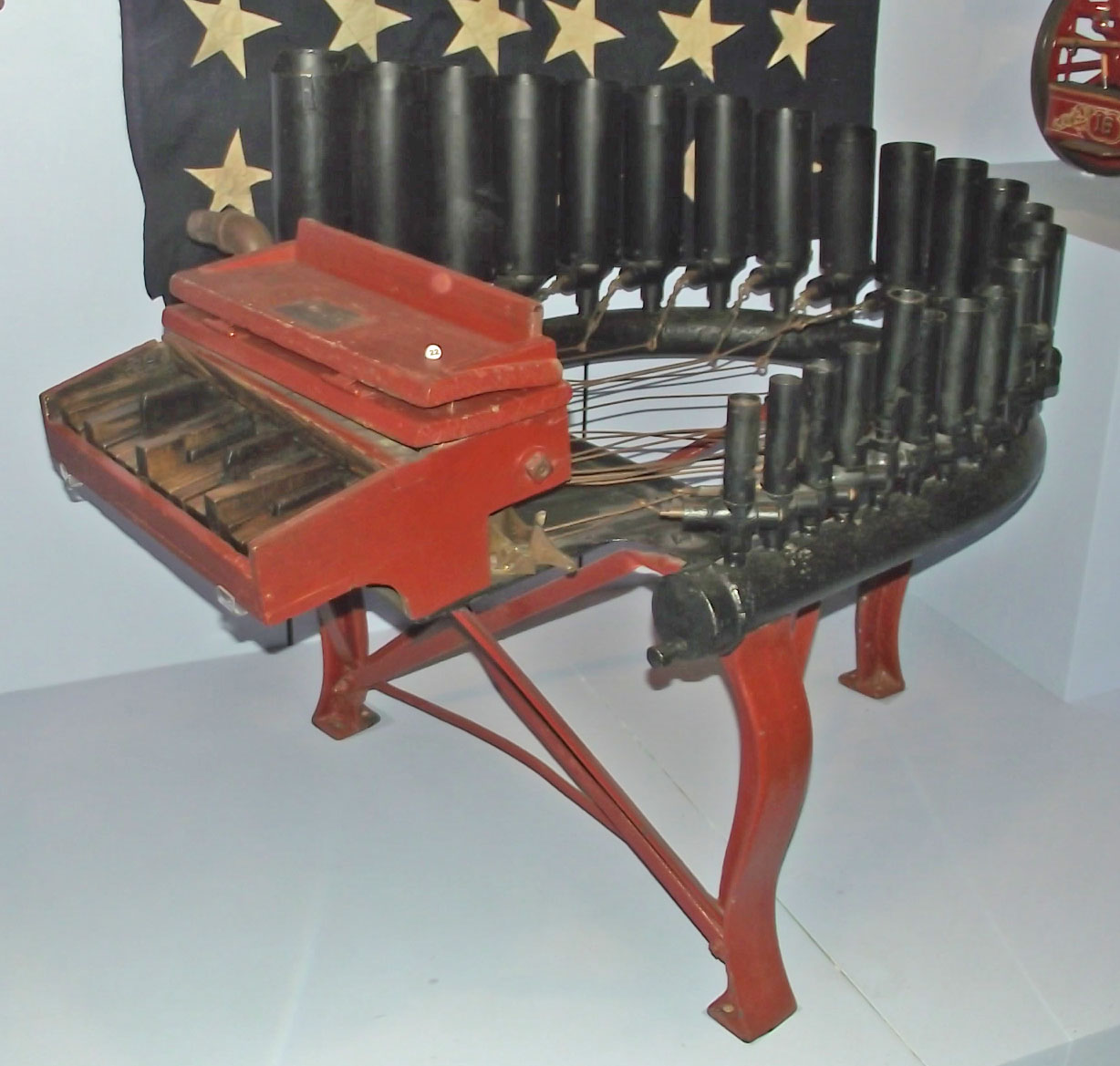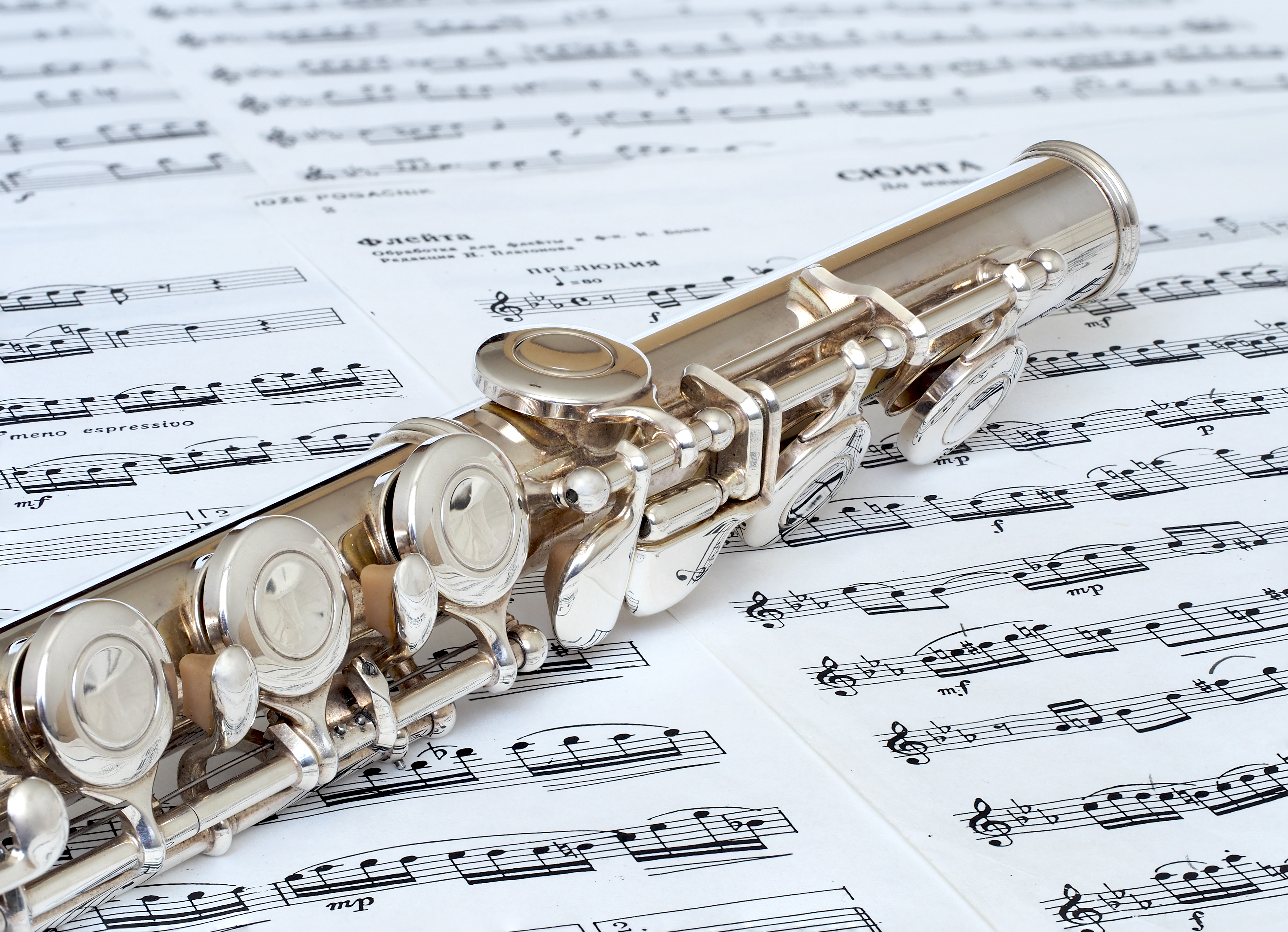|
Free Aerophone
An aerophone is a musical instrument that produces sound primarily by causing a body of air to vibrate, without the use of strings or membranes (which are respectively chordophones and membranophones), and without the vibration of the instrument itself adding considerably to the sound (or idiophones). According to Curt Sachs: These may be lips, a mechanical reed, or a sharp edge. Also, an aerophone may be excited by percussive acts, such as the slapping of the keys of a flute or of any other woodwind. A free aerophone lacks the enclosed column of air yet, "cause a series of condensations and rarefications by various means." Overview Aerophones are one of the four main classes of instruments in the original Hornbostel–Sachs system of musical instrument classification, which further classifies aerophones by whether or not the vibrating air is contained within the instrument. The first class (41) includes instruments which, when played, do ''not'' contain the vibrating air. The ... [...More Info...] [...Related Items...] OR: [Wikipedia] [Google] [Baidu] |
Shinobue And Other Flutes-3
The ''shinobue'' (kanji: wiktionary:篠笛, 篠笛; also called ''takebue'' (kanji: wiktionary:竹笛, 竹笛) in the context of Japanese traditional arts) is a Japanese transverse flute or Fue (flute), fue that has a high-pitched sound. Usage It is found in Hayashi (music), hayashi and nagauta ensembles, and plays important roles in noh and kabuki theatre music. It is heard in Shinto music such as ''Kagura, kagura-den'' and in traditional Japanese folk songs. Variations There are three styles: ''uta'' (song), ''hayashi'' (festival), and ''doremi''. The uta is tuned to a Japanese variant of the shi'er lü Musical scale, scale, while the temperament of the hayashi vary across regions. The doremi is tuned to the western Musical scale, scale; hence the name. See also *Ryuteki *Bamboo musical instruments External linksRon Korb's Asian Flute Gallery(features description and drawing of the Shinobue and other Japanese flutes) (features articles on making and playing of the Shi ... [...More Info...] [...Related Items...] OR: [Wikipedia] [Google] [Baidu] |
Trumpet
The trumpet is a brass instrument commonly used in classical and jazz musical ensemble, ensembles. The trumpet group ranges from the piccolo trumpet—with the highest Register (music), register in the brass family—to the bass trumpet, pitched one octave below the standard B or C trumpet. Trumpet-like instruments have historically been used as signaling devices in battle or hunting, with examples dating back to the 2nd Millenium BC. They began to be used as musical instruments only in the late 14th or early 15th century. Trumpets are used in art music styles, appearing in orchestras, concert bands, chamber music groups, and jazz ensembles. They are also common in popular music and are generally included in school bands. Sound is produced by vibrating the lips in a mouthpiece, which starts a standing wave in the air column of the instrument. Since the late 15th century, trumpets have primarily been constructed of brass tubing, usually bent twice into a rounded rectangular ... [...More Info...] [...Related Items...] OR: [Wikipedia] [Google] [Baidu] |
Steam Whistle
A steam whistle is a device used to produce sound in the form of a whistle using live steam, which creates, projects, and amplifies its sound by acting as a vibrating system. Operation The whistle consists of the following main parts, as seen on the drawing: the whistle bell (1), the steam orifice or aperture (2), and the valve (9). When the lever (10) is actuated (usually via a pull cord), the valve opens and lets the steam escape through the orifice. The steam will alternately compress and rarefy in the bell, creating the sound. The pitch (music), pitch, or tone, is dependent on the length of the bell; and also how far the operator has opened the valve. Some locomotive engineers invented their own distinctive style of whistling. Uses of steam whistles Steam whistles are often used on buildings such as factory, factories, university, universities, and similar places to signal the start or end of a work shift, etc. Steam locomotive, Steam railway locomotives, traction e ... [...More Info...] [...Related Items...] OR: [Wikipedia] [Google] [Baidu] |
Calliope (music)
A calliope (see #Pronunciation, below for pronunciation) is an American musical instrument that produces sound by sending a gas, originally steam or, more recently, compressed air, through large whistles—originally locomotive whistles. A calliope is typically very loud. Even some small calliopes are audible for miles. There is no way to vary timbre (music), tone or dynamics (music), volume. Musically, the only musical expression, expression possible is the pitch (music), pitch, rhythm, and duration (music), duration of the notes. The steam calliope is also known as a steam Pipe organ, organ ( in Quebec) or steam piano ( in Quebec). The air-driven calliope is sometimes called a calliaphone, the name given to it by Norman Baker (inventor), Norman Baker, but the "Calliaphone" name is registered by the Miner Company for instruments produced under the Tangley name. In the Steam power during the Industrial Revolution, age of steam, the steam calliope was particularly used on riverbo ... [...More Info...] [...Related Items...] OR: [Wikipedia] [Google] [Baidu] |
Harmonica
The harmonica, also known as a French harp or mouth organ, is a free reed wind instrument used worldwide in many musical genres, notably in blues, American folk music, classical music, jazz, country, and rock. The many types of harmonica include diatonic, chromatic, tremolo, octave, orchestral, and bass versions. A harmonica is played by using the lips and tongue to direct air into or out of one (or more) holes along a mouthpiece (which covers one edge of the harmonica for most of its length). Behind each hole is a chamber containing at least one reed. The most common type of harmonica is a diatonic Richter-tuned instrument with ten air passages and twenty reeds, often called a blues harp. A harmonica reed is a flat, elongated spring typically made of brass, stainless steel, or bronze, which is secured at one end over a slot that serves as an airway. When the free end is made to vibrate by the player's air, the reed alternately blocks and unblocks the airway to produce soun ... [...More Info...] [...Related Items...] OR: [Wikipedia] [Google] [Baidu] |
Organ (music)
Carol Williams performing at the West_Point_Cadet_Chapel.html" ;"title="United States Military Academy West Point Cadet Chapel">United States Military Academy West Point Cadet Chapel. In music, the organ is a keyboard instrument of one or more Pipe organ, pipe divisions or other means (generally woodwind or electronic musical instrument, electric) for producing tones. The organs have usually two or three, sometimes up to five or more, manuals for playing with the hands and a pedalboard for playing with the feet. With the use of registers, several groups of pipes can be connected to one manual. The organ has been used in various musical settings, particularly in classical music. Music written specifically for the organ is common from the Renaissance to the present day. Pipe organs, the most traditional type, operate by forcing air through pipes of varying sizes and materials, each producing a different pitch and tone. These instruments are commonly found in churches and co ... [...More Info...] [...Related Items...] OR: [Wikipedia] [Google] [Baidu] |
Clarinet
The clarinet is a Single-reed instrument, single-reed musical instrument in the woodwind family, with a nearly cylindrical bore (wind instruments), bore and a flared bell. Clarinets comprise a Family (musical instruments), family of instruments of differing sizes and pitches. The clarinet family is the largest woodwind family, ranging from the contrabass clarinet, BB♭ contrabass to the A-flat clarinet, A♭ piccolo. The B soprano clarinet is the most common type, and is the instrument usually indicated by the word "clarinet". German instrument maker Johann Christoph Denner is generally credited with inventing the clarinet sometime around 1700 by adding a register key to the chalumeau, an earlier single-reed instrument. Over time, additional keywork and airtight pads were added to improve the tone and playability. Today the clarinet is a standard fixture of the orchestra and concert band and is used in classical music, military bands, klezmer, jazz, and other styles. Etymol ... [...More Info...] [...Related Items...] OR: [Wikipedia] [Google] [Baidu] |
Saxophone
The saxophone (often referred to colloquially as the sax) is a type of single-reed woodwind instrument with a conical body, usually made of brass. As with all single-reed instruments, sound is produced when a reed on a mouthpiece vibrates to produce a sound wave inside the instrument's body. The pitch is controlled by opening and closing holes in the body to change the effective length of the tube. The holes are closed by leather pads attached to keys operated by the player. Saxophones are made in various sizes and are almost always treated as transposing instruments. A person who plays the saxophone is called a ''saxophonist'' or ''saxist''. The saxophone is used in a wide range of musical styles including classical music (such as concert bands, chamber music, solo repertoire, and occasionally orchestras), military bands, marching bands, jazz (such as big bands and jazz combos), and contemporary music. The saxophone is also used as a solo and melody instrument or as a mem ... [...More Info...] [...Related Items...] OR: [Wikipedia] [Google] [Baidu] |
Flute
The flute is a member of a family of musical instruments in the woodwind group. Like all woodwinds, flutes are aerophones, producing sound with a vibrating column of air. Flutes produce sound when the player's air flows across an opening. In the Hornbostel–Sachs classification system, flutes are edge-blown aerophones. A musician who plays the flute is called a flautist or flutist. Paleolithic flutes with hand-bored holes are the earliest known identifiable musical instruments. A number of flutes dating to about 53,000 to 45,000 years ago have been found in the Swabian Jura region of present-day Germany, indicating a developed musical tradition from the earliest period of modern human presence in Europe.. Citation on p. 248. * While the oldest flutes currently known were found in Europe, Asia also has a long history with the instrument. A playable bone flute discovered in China is dated to about 9,000 years ago. The Americas also had an ancient flute culture, with instrumen ... [...More Info...] [...Related Items...] OR: [Wikipedia] [Google] [Baidu] |
Oboe
The oboe ( ) is a type of double-reed woodwind instrument. Oboes are usually made of wood, but may also be made of synthetic materials, such as plastic, resin, or hybrid composites. The most common type of oboe, the soprano oboe pitched in C, measures roughly long and has metal Key (instrument), keys, a conical Bore (wind instruments), bore and a flared bell. Sound is produced by blowing into the Reed (instrument), reed at a sufficient air pressure, causing it to vibrate with the air column. The distinctive tone is versatile and has been described as "bright". When the word ''oboe'' is used alone, it is generally taken to mean the soprano member rather than other instruments of the family, such as the bass oboe, the cor anglais (English horn), or oboe d'amore. Today, the oboe is commonly used as orchestral or solo instrument in Orchestra, symphony orchestras, concert bands and chamber music, chamber ensembles. The oboe is especially used in classical music, film music, some ge ... [...More Info...] [...Related Items...] OR: [Wikipedia] [Google] [Baidu] |
Woodwind Instruments
Woodwind instruments are a family of musical instruments within the greater category of wind instruments. Common examples include flute, clarinet, oboe, bassoon, and saxophone. There are two main types of woodwind instruments: flutes and Reed aerophones, reed instruments (otherwise called reed pipes). The main distinction between these instruments and other wind instruments is the way in which they produce sound. All woodwinds produce sound by splitting the air blown into them on a sharp edge, such as a reed (mouthpiece), reed or a fipple. Despite the name, a woodwind may be made of any material, not just wood. Common examples of other materials include brass, silver, cane, and other metals such as gold and platinum. The saxophone, for example, though made of brass, is considered a woodwind because it requires a reed to produce sound. Occasionally, woodwinds are made of earthen materials, especially ocarinas. Flutes Flutes produce sound by directing a focused stream of air ... [...More Info...] [...Related Items...] OR: [Wikipedia] [Google] [Baidu] |
Trombone
The trombone (, Italian, French: ''trombone'') is a musical instrument in the Brass instrument, brass family. As with all brass instruments, sound is produced when the player's lips vibrate inside a mouthpiece, causing the Standing wave, air column inside the instrument to vibrate. Nearly all trombones use a telescoping slide mechanism to alter the Pitch (music), pitch instead of the brass instrument valve, valves used by other brass instruments. The valve trombone is an exception, using three valves similar to those on a trumpet, and the superbone has valves and a slide. The word "trombone" derives from Italian ''tromba'' (trumpet) and ''-one'' (a suffix meaning "large"), so the name means "large trumpet". The trombone has a predominantly cylindrical bore like the trumpet, in contrast to the more conical brass instruments like the cornet, the flugelhorn, the Baritone horn, baritone, and the euphonium. The most frequently encountered trombones are the tenor trombone and bass tr ... [...More Info...] [...Related Items...] OR: [Wikipedia] [Google] [Baidu] |





